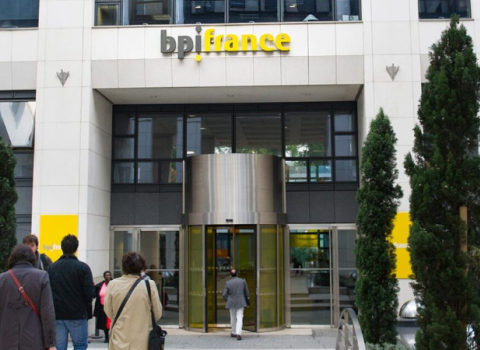Neither the programme nor budget for Horizon 2020 has been formally agreed but that did not stop the European Commission going ahead yesterday (10 July) and launching ten projects that will get money from this source, including five Joint Technology Initiatives (JTIs) funded by the EU and industry and four public/public partnerships to be jointly funded by the EU and member states, yesterday.
The fanfare was reserved for the JTIs, which bring together companies, SMEs and research organisations in projects jointly funded by EU and industry. “These are timely investments,” said European Commissioner for Research, Innovation and Science Máire Geoghegan-Quinn, speaking at the launch.
“Many competitors are investing faster than us,” she said, “and they are thinking big.” For example while the EU has the world’s first commercial-scale advanced bio-refinery for cellulosic biomass, there are reports that China plans to have nine such facilities by 2015. “So no-one can rest on their laurels. We need to bolster both public and private spending if we are to stay in - never mind ahead of - the game.”
Most of the €22 billion in the headline figure will go to the JTIs in innovative medicines, aeronautics, bio-based industries, fuel cells and hydrogen, and electronics. “These partnerships are focused on areas where the market alone has not been able to find a solution quickly, often because the return on investment is not guaranteed,” said Geoghegan-Quinn.
How JTIs work
Each JTI is managed by a dedicated legal entity, a Joint Undertaking, and not by an EU institution, as is the case for other Framework Research programmes. The governing board of each JTI establishes its own strategic research agenda and projects are selected through open and competitive calls. While most of the partnerships were started under the current Seventh Research Framework Programme (FP7), stakeholders say more time and money is needed to consolidate the objectives and scale up the technologies. There will also be an entirely new €3.8 billion investment in a bio-based industries JTI.
The guiding principle is that these five areas represent large-scale, long-term projects which, “No one company or country can deal with alone,” said Geoghegan – Quinn. It is thought this type of collaboration makes for a more efficient use of funds by pooling financial, human and infrastructure resources, and also aids in removing any block on innovation to get technologies to market faster.
Eight billion euros will be taken from the Horizon 2020 budget for the ten projects announced yesterday. This will be matched with approximately €10 billion from industry and close to €4 billion from national governments. “That represents a major increase in our level of ambition compared to the current public-private partnerships,” said Geoghegan-Quinn. Under FP7, a total EU contribution of €3.1 billion has been matched by an industry investment of €4.7 billion.
The five JTIs, which represent sectors already providing more than four million jobs, are:
- Innovative Medicines 2: to develop vaccines and new drugs including treatments for antibiotic resistant infections
- Fuel Cells and Hydrogen 2: to expand the use of clean and efficient technologies in transport, industry and energy
- Clean Sky 2: to develop cleaner, quieter aircraft which emit significantly less CO2
- Bio-based Industries: to use renewable natural resources and develop technologies for manufacturing greener products
- Electronic Components and Systems: to boost Europe’s electronics manufacturing capabilities
While the legislative framework for these initiatives has not yet been endorsed, Geoghegan-Quinn said the Parliament and Council have told the Commission to, “get on with the work so that you are ready to roll on January 1st.”
Partnership with industry
The industrial partners commit fifty per cent or more of the total costs of the JTIs, although the payment can consist of both in-kind contributions and hard cash.
JTIs proved popular with industry under FP7, and succeeded in attracting a high level of industrial participation, including many SMEs.
The Executive Director of the Innovative Medicines Initiative, Michel Goldman, said, “No specific measures were needed to attract SME involvement. They were attracted to the opportunity of work with both big pharma and academia.”
Geoghegan-Quinn is convinced that industry is committed to the JTIs. “Vice President Kallas, Vice President Kroes and I had an opportunity to eyeball eight CEOs involved in JTIs this morning,” she said. Goeghegan-Quinn is pleased with their commitment to the projects, their willingness to work with their competitors for the best of Europe and to provide the budget as promised. “They have realised that in this tough global environment, it is sometimes better to work together with a competitor than not to work at all.”
What’s new?
The new JTIs aim to step up activities from FP7. For example, while the first Fuel Cells and Hydrogen JTI has delivered units suitable for use in forklift trucks and small back-up power units, it now aims to scale-this up for more widespread use in road and air transport.
Industry commitments to the JTIs are significantly higher than in FP7 and include additional activities that will be solely financed by the industry partners, in particular to help ensure the effective deployment of the new technologies.
Geoghegan-Quinn claimed that the second round of JTIs will address criticisms that the current initiatives are overly complex and difficult to take part in. “We needed to bring industry back into the programme,” said Geoghegan-Quinn. “When we asked industrial partners what was wrong, they all said ‘It’s all wrapped up in red tape. We have an enormous administrative burden’.” JTIs under FP7 all had their own funding rates and rules of participation, but the new initiatives will in general follow the rules of participation for Horizon 2020.
Public/public partnerships
The Commission also launched a sixth public-private partnership SESAR, which will invest €1.6 billion in creating an integrated air traffic control system for the whole of Europe. The Commission is putting in €600 million, with the balance coming from Eurocontrol, the body that supervises European airspace.
Alongside this, the Commission announced four joint public/public partnerships with EU national governments, focussing on new treatments for poverty-related diseases, measurement technologies for industry, support for high tech SMEs, and assisted living products and services to help the elderly and disabled to live safely in their homes.
Geoghegan Quinn said these are areas where there is not sufficient incentive for industry to invest, but which would deliver significant benefits. For example, assisted living can improve quality of life for elderly and disabled people, while reducing the burden on statutory services and carers and – eventually – developing important new markets.





 A unique international forum for public research organisations and companies to connect their external engagement with strategic interests around their R&D system.
A unique international forum for public research organisations and companies to connect their external engagement with strategic interests around their R&D system.